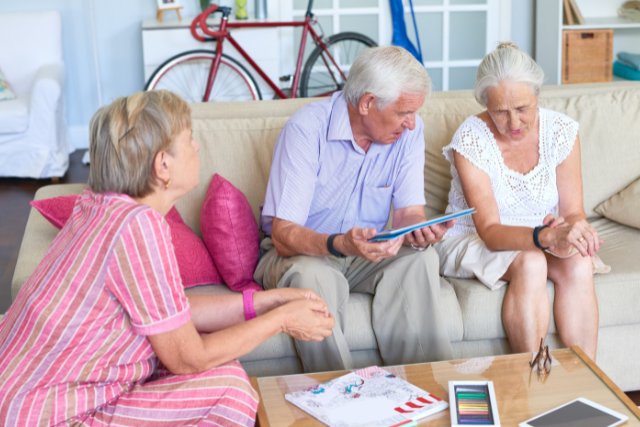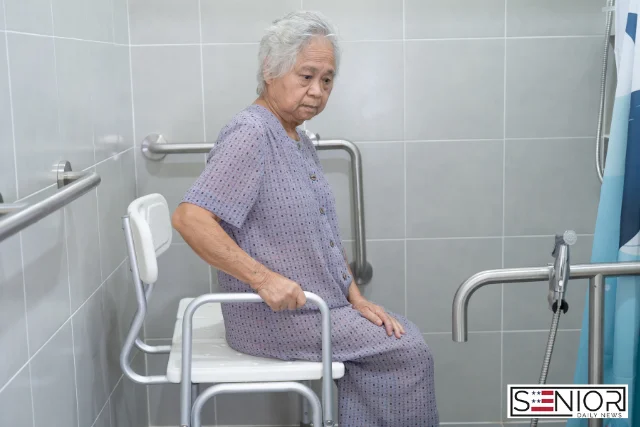Senior-Friendly Technology: Wearable Devices and Health Monitoring

Technology has become a valuable tool in our everyday lives, offering convenience, connection, and even improved health outcomes. For seniors, the adoption of modern tech may sometimes feel overwhelming, but it doesn’t have to be. Today, many gadgets are designed with simplicity and ease of use in mind, especially wearable devices and health monitoring tools. These innovations empower older adults to take control of their health, stay connected to loved ones, and maintain independence.
From tracking heart rates to sending emergency alerts, wearable devices have revolutionized senior care. In this article, we’ll explore the benefits of senior-friendly technology, highlight the best types of wearable health devices, and offer tips on how they can be easily integrated into daily life.
Why Wearable Technology Matters for Seniors
As people age, health monitoring becomes more essential. Chronic conditions, mobility issues, and an increased risk of emergencies make proactive healthcare a priority. Senior-friendly wearable technology bridges the gap between independence and safety.
Key benefits include:
Early detection of health issues
Monitoring of chronic conditions like heart disease or diabetes
Improved communication with caregivers and family
Peace of mind for seniors and their loved ones
Wearable devices are discreet, easy to use, and designed to fit seamlessly into daily routines — no complicated tech knowledge required.
Types of Wearable Health Devices for Seniors
Not all wearables are created equal. The good news is that the variety of available devices means there’s something for everyone’s needs and comfort level.
1. Fitness and Activity Trackers
Popular brands like Fitbit and Garmin offer user-friendly fitness trackers that help seniors monitor their daily physical activity.
Features include:
Step counting
Heart rate monitoring
Sleep tracking
Calories burned
Why it’s beneficial:
Encourages seniors to stay active and maintain mobility
Helps track progress toward fitness goals
Alerts users when they have been inactive for too long
Staying active supports heart health, reduces the risk of falls, and improves overall mood and energy.
2. Smartwatches with Health Features
Smartwatches such as the Apple Watch and Samsung Galaxy Watch offer more advanced health monitoring features, including:
Electrocardiogram (ECG) readings
Blood oxygen level monitoring
Fall detection and emergency SOS
Medication reminders
Why it’s beneficial:
Automatic fall detection can notify emergency contacts immediately
ECG and oxygen monitoring help manage chronic conditions
Built-in reminders support medication adherence
Smartwatches combine everyday convenience with powerful health tracking capabilities.
3. Medical Alert Devices
Medical alert systems worn as necklaces or wristbands are designed specifically for seniors who may face medical emergencies.
Features include:
One-touch emergency button
GPS location tracking
Automatic fall detection
24/7 connection to emergency response teams
Why it’s beneficial:
Offers peace of mind for seniors living alone
Ensures immediate access to help in emergencies
Allows family and caregivers to track location for safety
Modern medical alert devices are more discreet and stylish than ever, making them a popular choice for safety-conscious seniors.
4. Wearable ECG and Heart Monitors
For seniors with heart conditions, wearable ECG monitors provide continuous or on-demand heart monitoring.
Features include:
Real-time heart rhythm tracking
Data sharing with healthcare providers
Alerts for irregular heartbeats
Why it’s beneficial:
Helps detect arrhythmias or other heart issues early
Supports management of existing cardiac conditions
Allows for proactive treatment adjustments
These specialized devices often sync with smartphones or tablets for easy viewing and sharing of data.
5. Hearing Aids with Smart Technology
Today’s smart hearing aids do more than amplify sound. They connect to smartphones and adjust settings automatically based on the environment.
Features include:
Bluetooth connectivity
Customizable sound profiles
Health tracking (in some models)
Why it’s beneficial:
Improves communication and social interaction
Reduces feelings of isolation
Some models also track physical activity and detect falls
Modern hearing aids are becoming valuable multi-functional tools for seniors.
6. Sleep Monitors
Sleep plays a vital role in health, particularly for seniors. Wearable sleep monitors track:
Sleep duration and quality
Breathing patterns
Heart rate during sleep
Why it’s beneficial:
Helps identify sleep disorders such as sleep apnea
Improves sleep hygiene and overall well-being
Provides data that can be shared with healthcare providers
Better sleep contributes to improved cognitive function, mood, and overall health.
How Wearable Devices Promote Independence
Many seniors value independence and prefer to live on their own for as long as possible. Wearable health devices help make that goal achievable by:
Providing real-time health data
Alerting caregivers in emergencies
Offering reminders for medications and appointments
Encouraging healthy habits and physical activity
By giving seniors control over their health and offering safety nets in case of emergencies, these devices help maintain dignity and autonomy.
Challenges and Considerations
While wearable technology offers many benefits, it’s important to consider a few challenges:
Some seniors may find new technology intimidating
Devices need to be comfortable and easy to use
Regular charging and maintenance are required
Not all devices are covered by insurance
To overcome these challenges:
Choose devices specifically marketed as senior-friendly
Look for simple interfaces and easy-to-read displays
Offer help with setup and training
Discuss options with healthcare providers to find the best fit
FAQs About Senior-Friendly Wearable Technology
Q1: Are wearable devices difficult for seniors to use?
Most wearable devices for seniors are designed with user-friendliness in mind. Features like large buttons, simple menus, and voice commands make them accessible.
Q2: Can wearables replace regular doctor visits?
No. While they provide helpful data and early alerts, wearables should complement, not replace, regular healthcare visits.
Q3: Do wearable devices require smartphones?
Some devices do sync with smartphones for advanced features, but many basic health monitoring devices can function independently.
Q4: Are wearable devices covered by insurance or Medicare?
Coverage varies. Some medical alert systems may be covered if prescribed by a doctor, but most fitness trackers and smartwatches are not.
Q5: Can wearable devices help caregivers?
Yes. Many devices allow caregivers to monitor seniors’ health data and receive alerts, improving care and peace of mind.
Image Designed Using Canva






